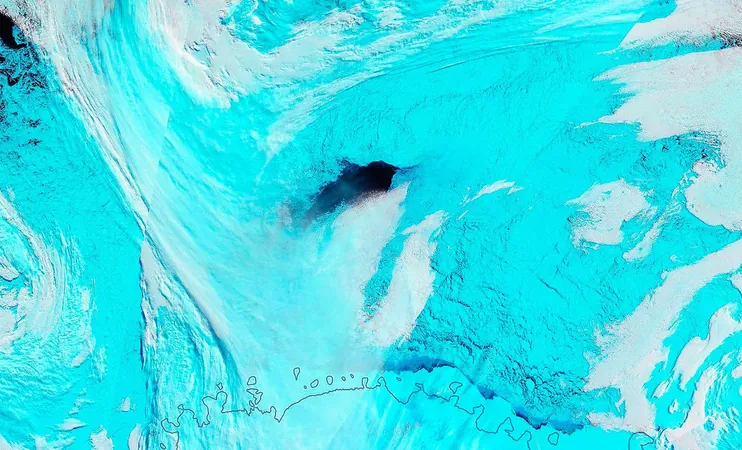
Gigantic Swiss-Sized Hole Emerges in Antarctica: What You Need to Know
2025-04-24
Author: Jessica Wong
A Stunning Discovery in Antarctica
Scientists are buzzing with excitement over a remarkable phenomenon unfolding in Antarctica: a massive hole in the sea ice, astonishingly the size of Switzerland, has been open for several weeks. This striking event has left researchers scratching their heads, questioning the natural mechanisms behind it.
Understanding Polynyas: Nature's Ice Holes
So, what exactly is a polynya? In the simplest terms, it's an area within sea ice where the ice has cracked or melted away, revealing the ocean below. While polynyas are not rare in polar regions, the sheer size and prolonged existence of the one above Maud Rise makes it a point of major intrigue.
The Science Behind Its Formation
Several intriguing factors contributed to this colossal ice hole. A key player is Ekman transport, a process where winds drive salty water currents to the area, intensifying ice melt from underneath. This created perfect conditions for the hole to persist for weeks.
The Historic Role of Maud Rise
The submerged Maud Rise seamount, found beneath the Weddell Sea, is historically significant for polynya formation. The region was first identified as a polynya hotspot between 1974 and 1976, revealing a much larger hole back then. Over the years, scientists have theorized that the underwater mountains trap warm salty waters, weakening the ice above.
A Repeat Performance: The 2017 Polynya Mystery
After years of sporadic activity, another large hole reappeared over Maud Rise in 2017. This time, the Weddell Gyre's strength brought warmer, deeper waters up to the surface, creating a softening effect on the ice. Yet, the persistence of the hole throughout winter baffled researchers.
The Impact of Storms on Antarctica’s Ice
Moreover, the longevity of the polynya has been heavily influenced by wind and storm patterns. New studies reveal that increasing numbers of extratropical storms—triggered by rising global temperatures—are providing the necessary force to maintain the hole. These powerful storms relocate the ice while atmospheric rivers inject heat, further exacerbating the melting.
Climate Change's Disturbing Influence
The repercussions of climate change are becoming glaringly obvious. As atmospheric and ocean conditions fluctuate due to global warming, these storm events could escalate in both frequency and intensity. According to a recent published study in Science Advances, there are growing concerns that such shifts might jeopardize Antarctica's fragile ice dynamics, speeding up ice loss and unleashing unpredictable weather.
Global Implications of Local Melting
But the impact of this Antarctic polynya reaches far beyond local borders. It plays a crucial role in global ocean circulation patterns, especially within the global conveyor belt—an essential system that distributes heat and carbon around the planet. The deep convection generated by the polynya doesn't just release heat; it upwells water that can potentially expel carbon dioxide into the atmosphere. This could accelerate climate change by releasing even more CO₂ into our environment.




 Brasil (PT)
Brasil (PT)
 Canada (EN)
Canada (EN)
 Chile (ES)
Chile (ES)
 Česko (CS)
Česko (CS)
 대한민국 (KO)
대한민국 (KO)
 España (ES)
España (ES)
 France (FR)
France (FR)
 Hong Kong (EN)
Hong Kong (EN)
 Italia (IT)
Italia (IT)
 日本 (JA)
日本 (JA)
 Magyarország (HU)
Magyarország (HU)
 Norge (NO)
Norge (NO)
 Polska (PL)
Polska (PL)
 Schweiz (DE)
Schweiz (DE)
 Singapore (EN)
Singapore (EN)
 Sverige (SV)
Sverige (SV)
 Suomi (FI)
Suomi (FI)
 Türkiye (TR)
Türkiye (TR)
 الإمارات العربية المتحدة (AR)
الإمارات العربية المتحدة (AR)